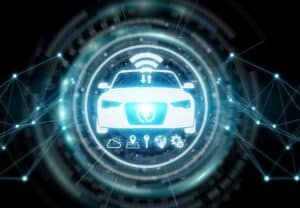
Given its distinct advantages, it’s a safe bet to assume that the connected vehicle will drive significant new cost optimization and revenue-enhancing opportunities in the automotive industry.
Growth in connected vehicles and services is a critical differentiator for automotive OEMs of our times. It will be accompanied by large-scale connected vehicle data generation that can be leveraged to help save costs, optimize innovation, and to develop new products and services.
All of this is clearly impacting the connected vehicle market like never before. A McKinsey report suggests that by 2030, about 95% of all new vehicles sold globally will be connected, up from around 50% in 2021. Overall, the connected vehicle market, estimated at $23.6 billion globally in 2021, will reach $56.3 billion by 2026.
Data analytics – the key to managing OEM costs
A key business value for OEMs from connected vehicles lies in its ability to save costs – and warranty costs in particular. Warranty costs alone consume 5% of the revenue that automakers earn, and the use of available connected vehicle data could cut these costs significantly. While many OEMs have been collecting data from their vehicles for years, it’s only recently that some of them realized the power of the data being collected and how to use it to actually reduce costs.
Many OEMs gather remote vehicle data like speed, acceleration, distance covered, pause duration, temperature, etc., which provide a rich data set for further analysis. End-user driving styles can be identified using vehicle controller data and then compared with warranty claims data. These driving styles can be categorized into unique customer segments with different warranty risk profiles, characteristics, and costs.
By monitoring and analyzing connectivity data over a large section of vehicles, OEMs can detect technical faults and issues early on and address them proactively, which reduces the cost of repairs and warranty claims. In such instances, OEMs implement proactive diagnostics or prognostics, which identifies and predicts failures in vehicles. This is a win-win scenario as customers are alerted about potential failures or malfunctions before they occur, which enables OEMs to provide a satisfactory after-sales experience.
Groups that are at risk of high warranty costs can be identified through a process of dynamic profiling and continuous hypothesis testing. For example, if a group of 50 VIN numbers had some kind of pattern identified, which highlighted some unique issues like head gasket failures, a hypothesis testing tool can test aspects like valve failure when the vehicle was driven at a low speed to identify the root causes of head gasket failures.
Such hypothesis testing can identify clusters of vehicles, the underlying issues in each cluster, how the vehicle was used in each cluster, the potential risk of warranty costs for the cluster, the associated warranty costs, as well as the potential root causes of the underlying issues. Once the root causes and associated warranty costs are identified by driving style, predictive modeling is used to accurately predict future claims for each style based on past warranty claims data.
See also: How Connected Products Enable Predictive Maintenance
The overall business impact of the connected vehicle
The use of data analytics can lead to a significant reduction in total warranty costs. For instance, OEMs that have implemented such solutions reported a high reduction in such costs, which is a significant boost to the OEM’s bottom line. In addition, the analysis of data based on driving patterns leads to improved customer segmentation, which would not have been possible earlier.
Additional insights on how drivers use different vehicles like hybrid or electric vehicles also leads to additional insights into an OEM’s portfolio strategy. Such outcomes lead to improved engine development and testing, as the key insight from the data analysis is that short trips with long pauses cause higher engine wear and warranty claims – a very counter-intuitive argument. This enables OEMs to make better decisions about component selection, for example, by verifying whether there is the use of appropriate cooling systems in different climate zones.
However, a large number of OEMs are still new to the process of developing their digital strategies and infrastructure to enable connected vehicle applications and services. Tier 1 suppliers to OEMs are further lagging in most cases. Yet, offering connected vehicle applications and services can lead to significant reductions in operating costs (e.g., warranty) and topline growth (e.g., new subscription models).
To address this challenge, many OEMs are rapidly building their data science and engineering teams to be able to gather enterprise-wide data and use that data effectively to provide these services and applications. However, there is a war for talent – and the shortage of qualified data engineers and scientists is one of them. New pure-play data science and engineering service providers can help fill this talent gap.
Given its distinct advantages, it’s a safe bet to assume that the connected vehicle will drive significant new cost optimization and revenue-enhancing opportunities in the automotive industry. Of course, there will be challenges, especially in terms of how tech advancements will fit into customer requirements as well as the ability of OEMs and suppliers to effectively execute their digital strategies. But nothing will stop the connected vehicle from enabling a hugely successful growth story for the industry in the coming years. It is truly an exciting time in the automotive industry!




























